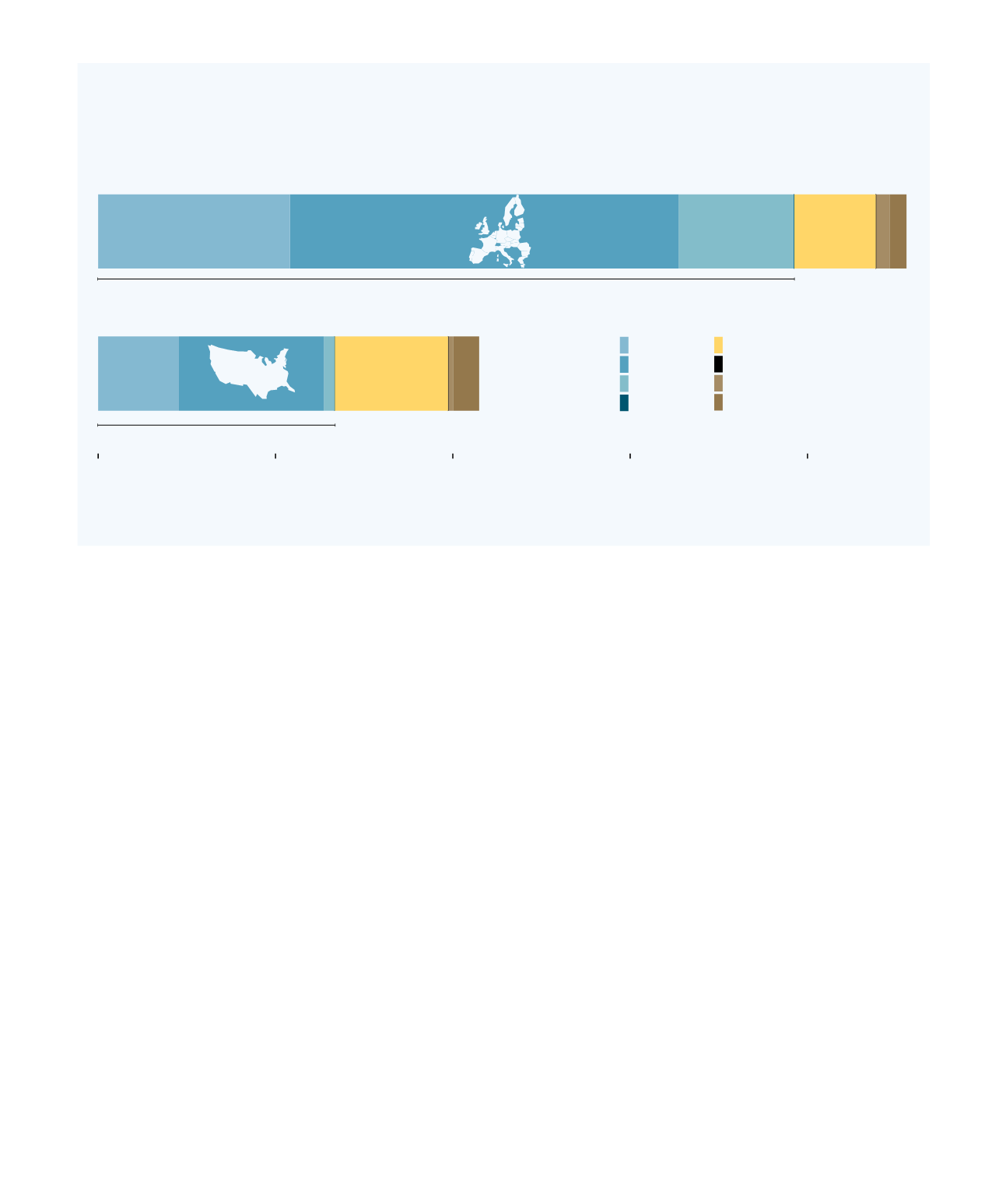
63
For pulp and paper production, networks of shell companies
and plantations are actively used to by-pass logging mora-
toriums under the pretext of agricultural or palm-oil invest-
ments. Holding companies in tax havens and shell compa-
nies are actively used to deliberately and systematically
bypass logging moratoriums for alleged plantation devel-
opment and hide the real ownership of plantations to avoid
prosecution. Often these plantations or agricultural develop-
ment are never established, or they are declared bankrupt
following clearing. This results in significant loss of revenue
to governments. Perpetrators use legal loopholes to conduct
tax avoidance, or simply commit straightforward illegal tax
evasion. Plantations are also used as cover for larger networks
of forest logging roads. The road networks are used to funnel
illegal timber through plantations, or to ship wood and pulp
via legal plantations in order to re-classify pulp or wood as
legal production.
122
China is now the world’s largest consumer of tropical timber
(ITTO 2011), and increasing. Significant efforts are made
in China to establish plantations, however China’s wood
industry depends on imports for almost 50% of its timber
supply. Sourcing of materials for this large and growing
market is crucial to the long-term sustainability of the
industry in China and of forest resources and wood indus-
tries around the globe.
124
Figure 11:
Wood and wood products from tropical countries to Europe and United States.
0
5 000
10 000
15 000
20 000
Thousands cubic metres of roundwood equivalent, 2010
62%
86%
Paper
Pulp
Chip particles
Newsprint
Plywood
Sawnwood
Particle board
Industrial roundwood
Source: FAOSTAT; EUROSTAT
E
UROPEAN
U
NION
U
NITED
S
TATES
Wood and wood products from tropical countries*
to Europe and United States
* Selected tropical countries: Brazil, Chile, China, Indonesia, Philippines, South Africa, and Uruguay
The scope of illegal logging can be deduced from assessing
the amount of tropical wood out of all the wood products
imported to the EU and US. About 33.5 million m
3
round
wood equivalent (RWE), or 9–25%, originates in tropical
countries, where illegal logging is widespread.
According to data from EUROSTAT, FAO and ITTO for
2010, EU imports 133–385 million m
3
RWE of wood products
including paper and pulp. The US imports about 72 million
m
3
. About 59 per cent of the imports to the EU and the US are
paper and pulp. From tropical countries the relative amount of
paper and pulp is higher, at 62% for US and 86% of imports
to the EU.
About 60 million tons of paper and pulp (RWE of 186 million
m
3
) was imported to the US and the EU combined in 2010.
EU imports 2/3 of the paper, and US and EU import the same
amount of pulp. 15% of this is sourced in tropical countries.
Paper and pulp are interesting products from a transnational
organized crime perspective because once it has been processed
it takes scientific analysis of fibre samples to determine its
origins, in contrast to roundwood where species and origins
can more easily be identified. This makes laundering of parts of
the supply chain effective, and retracing of the product imprac-
tical and expensive. The wood used to produce paper and pulp
is often mostly or partly declared falsely as plantation wood.
125


